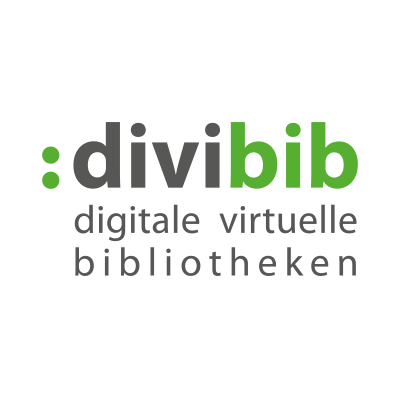
What Is Digital Accessibility?
Digital accessibility is about designing digital technologies and content in such a way that they are accessible to all people – regardless of individual abilities and limitations. This includes designing websites, applications, software, documents and other digital resources so that they can be used by people with different levels of ability without any problems.
How to Achieve Digital Accessibility
- Your texts stand out against the background of your platform
- Users can consume your media in several ways – informative images come with alternative texts; videos and audio tracks contain subtitles and transcripts
- Your website can be navigated without a mouse, using only a keyboard
- You have designed your digital content in such a way that it can be interpreted and used by assistive technologies
- Users' system settings regarding font size and animations are adopted
Accessible Websites in the Digital Age

In Europe, the clock is ticking when it comes to digital accessibility.
The Act to Strengthen Accessibility (Barrierefreiheitsstärkungsgesetz, BFSG) and the European Accessibility Act will come into force in 2025. By then, the majority of business-related websites will have to comply with the new accessibility regulations. This means that people with impairments, e.g. visual or hearing problems or limited mobility, will be able to use digital services fully and independently – without having to rely on the help of others. Even though the implementation of digital accessibility can be daunting, it offers a wide range of benefits for both users and businesses.
Good Reasons for Accessible Websites
- Wider target audience
- Improved usability for all users
- Compliance with legal requirements
- Forward-looking development approach
Legal Framework for Digital Accessibility
In recent years, the European Accessibility Act has ensured that many companies have started to address the issue of digital accessibility. The EU directive requires e-commerce websites and applications to be accessible to everyone. This affects many apps and services for consumers.
Besides public authorities, more and more private companies have to comply with accessibility requirements for websites. For years, the Federal Ordinance on Barrier-Free Information Technology (Barrierefreie-Informationstechnik-Verordnung, BITV) has required public authorities to ensure digital accessibility. This is a challenge that should not be underestimated.
Obligation for E-Commerce
European directives have to be incorporated into the respective national legislation by EU member states.
In Germany, this was already done in 2021 with the Act to Strengthen Accessibility. The law will come into force on the 28th of June 2025. This means that affected companies have enough time to familiarise themselves with the new laws and evaluate and adapt their e-commerce applications accordingly. But beware – there are consequences if the requirements for accessible websites are not met. Violations can result in fines or even a ban on the services offered.
WCAG as a Basis
To avoid this, the requirements that your website or app has to meet should be checked at an early stage. The Act to Strengthen Accessibility is based on the globally recognised Web Content Accessibility Guidelines (WCAG). This catalogue of criteria is a set of basic principles for how digital content on the Internet can be designed and implemented to be accessible.
The WCAG criteria are used to check whether digital content complies with legal requirements. They form the basis for new projects aimed at designing and developing accessible websites and apps.
Why Digital Accessibility Helps Your Company Move Forward
Better Usability for Everyone
Accessible websites not only meet legal requirements, but also offer benefits for all users – regardless of whether they have a disability or not. For example, a strong colour contrast between text and background helps not only people with visual impairments, but also people who use websites in bright sunlight.
Simple and clear navigation, well-structured content and unambiguous labelling of components are just some of the features of accessible websites that make them easier to use.
Accessibility as a Competitive Advantage
In Germany alone, around 7.8 million people live with severe disabilities (almost 10% of the total population). Worldwide, there are about 750 million people with disabilities. This represents a large group of potential customers and an economic opportunity that is often overlooked.
Accessible websites help older people, as most limitations occur over the course of a lifetime and are not congenital. The 50-plus generation in particular should be of great interest because it has more than 720 billion euros in disposable purchasing power per year.
Future-Proof Website
Awareness of the need for accessibility continues to grow. More and more countries are incorporating digital accessibility into their legislation. Experts anticipate that digital accessibility will become the norm in the future.
Now is the right time to position yourself on the market and gain a competitive edge. If you want to be a leader in your segment, you need to ensure that your digital offerings are as accessible as possible.
Implementing Accessibility – What Needs to Be Considered?
Permanent Requirement
Websites and apps are dynamic: Design, code and content are constantly changing. Every future change must be checked for accessibility barriers.
Accessibility can therefore not be implemented as a one-off initiative, but must be firmly integrated into existing workflows. It should be taken into account in all new projects right from the start. After all, the more advanced the product development, the more expensive it becomes.
Extensive Changes
The necessary changes, particularly to design and code, should not be underestimated. Keyboard control support, screen readers and other assistive technologies, for example, may require new development.
For newer systems that have been programmed using native and semantic HTML, smaller changes may also be sufficient. However, an expert analysis is initially required to estimate the costs.
Deadline: 2025 – Or Earlier
The remaining time until 2025 should therefore be used as effectively as possible. In general, the earlier, the better. After all, websites with accessibility barriers are wasting a lot of potential since they are not accessible to a financially strong user group.
As perfection is not achievable anyway, even small continuous improvements make sense. Consequently, the goal should not be »fully accessible«, but rather »low barriers«.

Two-Pronged Approach for a Better Long-Term Return on Investment
Training Staff and Adapting Processes
To be able to make long-term investments, structures must be fundamentally changed. This can be achieved by training staff on the one hand and adapting internal processes on the other. Possible measures include the following:
- Tailored training courses
- Support through guides and checklists as well as tools and plug-ins
- Inclusion of accessibility as a requirement and implementation through automated and manual testing

Revising Design, Code and Content
Accessibility requirements also apply to products and services already on the market. For this reason, they have to be revised and made as accessible as possible before the 2025 deadline. A UX audit presents a good opportunity to assess the current state and make sound decisions about how to move forward. Two different paths with different challenges can then be taken:
- Incremental Revision: Faster start and clear work packages, but inefficient use of resources and a messy transition phase
- New Development / Redesign: Efficient use of resources and an opportunity to tackle problems that have been neglected, but an initially larger project and a longer delay before improvements can go live

Our Digital Accessibility Services

Accessible Design and Development
We plan, design and develop accessible websites and apps – in compliance with the WCAG criteria or the Federal Ordinance on Barrier-Free Information Technology. Our experienced teams of user researchers, UX designers and developers work closely together to ensure that all aspects of accessibility are taken into account.

UX Audit with a Focus on Accessibility
We evaluate your system in terms of compliance with accessibility standards such as WCAG 2.1 or the Federal Ordinance on Barrier-Free Information Technology 2.0. Besides the detailed and comprehensive system analysis, we provide prioritised recommendations for action and, upon request, initial mockups and solution prototypes. The results report contains a management summary and is prepared in such a way that the findings can be transferred directly to development.

Training Courses
Our training courses enable UX designers and content creators to develop accessible digital solutions and content themselves. We supplement the teaching of theoretical and practical knowledge with illustrative examples from your day-to-day work. Our tailored training courses make the complex issue of accessibility understandable and practicable.

Consulting
Developing digital products that are as accessible as possible requires extensive expertise and many years of experience. Our accessibility experts are happy to answer all your questions, big and small, no matter where you are in the project. We are at your side – from requirements analysis, system evaluation and implementation to compliance testing.
Professional and Efficient: Accessibility with dotSource
Professionalism and Experience
Holistic Approach
Full Service – Maximum Efficiency
FAQ – Frequently Asked Questions About Digital Accessibility
Why is digital accessibility important?
Digital accessibility enables people with disabilities to use digital services. It also improves UX for everyone, helps reach a wider target audience and promotes compliance with regulations and standards.
A11Y (Accessibility): How is this relevant to companies?
- 7.9 million Germans are considered severely disabled
- Digital accessibility is essential to 15-20% of users
- 96.3% of the most popular websites are not accessible
- More than half of the German population wear glasses occasionally or permanently
How can you make your website accessible?
You can make your website accessible through a clear structure, alternative texts for images, high-contrast colours, keyboard accessibility and other measures. Fully implementing and achieving digital accessibility is very challenging. Feel free to reach out to our experts!
How can digital accessibility be measured?
You can determine the accessibility of your website with the help of an accessibility audit. However, you can also take a look at individual requirements such as colours and contrasts or alternative texts for images using free browser plug-ins.
Other Services in the Field of UX Design and Usability
Do you want to learn more? I'm looking forward to hearing from you!




